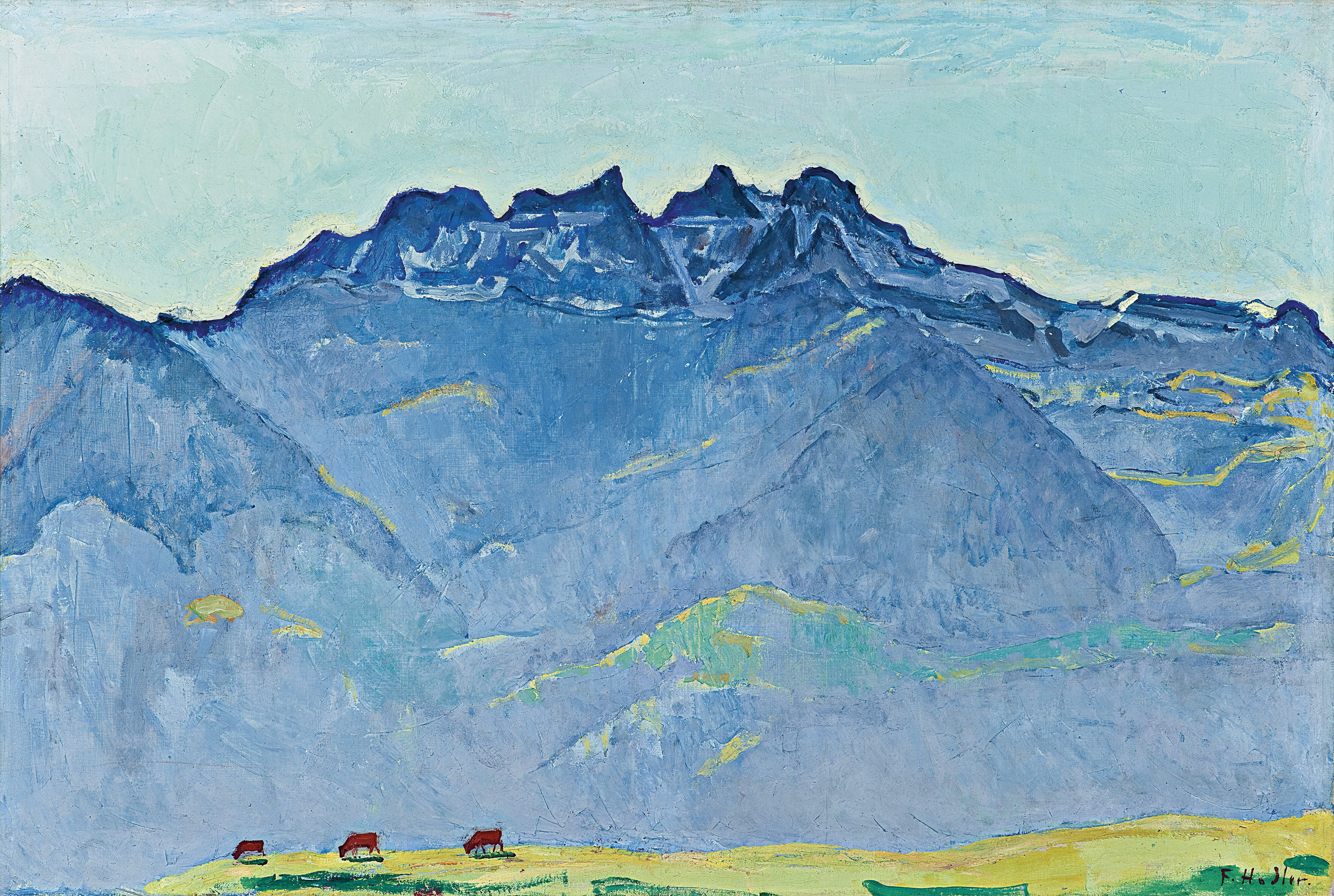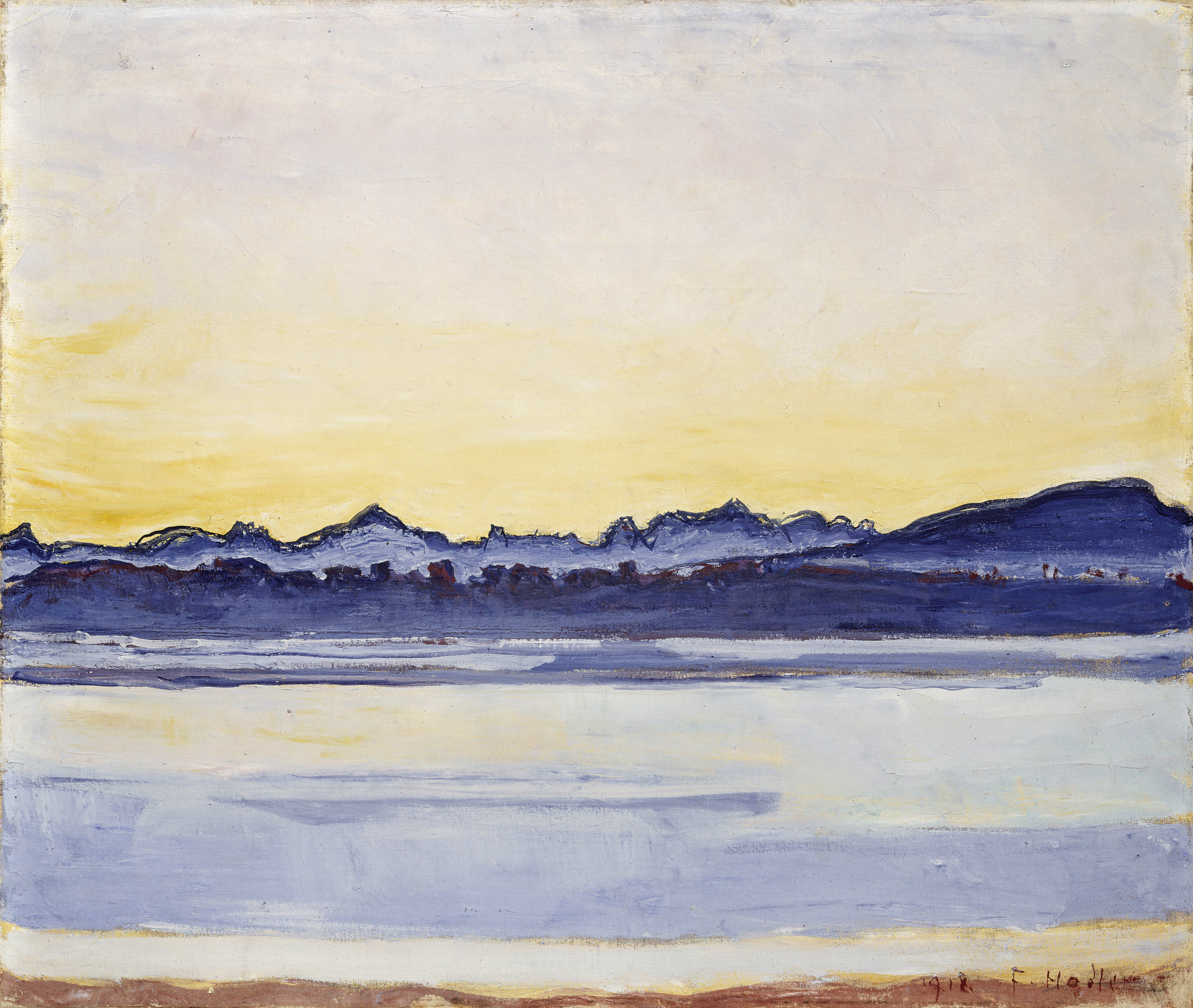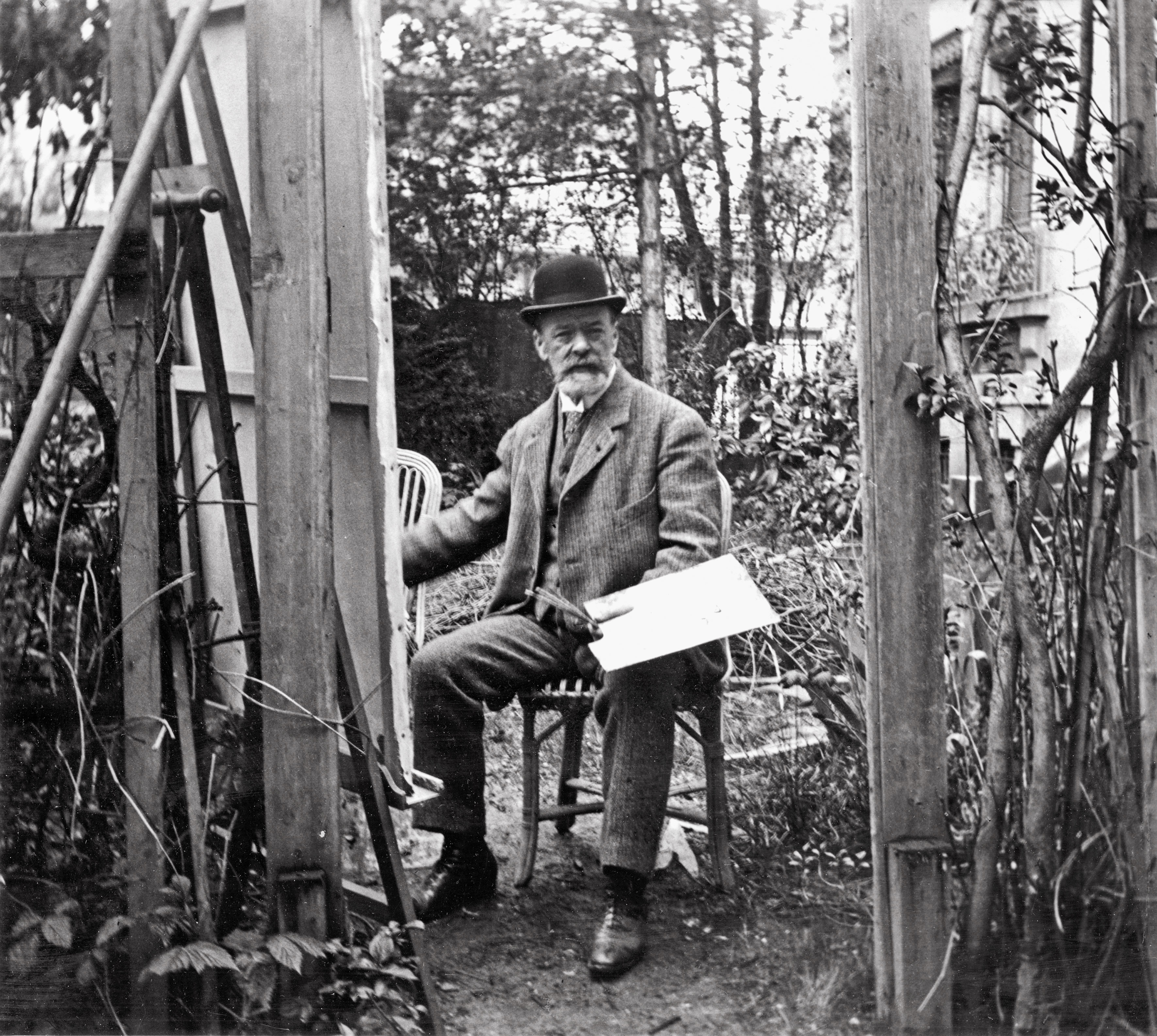Hodler opens in Basel after New York triumph

The late paintings of Swiss artist Ferdinand Hodler, who died in 1918, have gone on show in Basel in an exhibition that focuses on his human side.
Ferdinand Hodler: View to Infinity, named after one of the major paintings in the exhibition, has come to the Beyeler Foundation in Basel after an encouraging reception by both public and critics at the Neue Galerie in New York.
Hodler’s paintings are gaining in value on the art market, and the exhibition in New York has doubtless helped to make him better known to a new public.
In order to see him through fresh eyes, swissinfo.ch visited the exhibition in Basel with Chechen artist Lechi Abaev, who shares Hodler’s fascination with the harshness of the mountains and of the human condition, but who was unfamiliar with his work.
“By seizing the moment, he manages to express his emotions via the intact beauty of nature. His choice of colour and his treatment of light create amazing harmony,” Abaev commented as he looked at the paintings.
The exhibition covers the last five years of the artist’s life, a period when he had achieved a great freedom of spirit and freedom in his drawing, and a time when he kept returning to his favourite subjects: mountain and lake landscapes, and women. But it also reflects his concerns with illness, death and eternity.

More
Ferdinand Hodler at the Beyeler Foundation
First “Swiss made” artist
Ferdinand Hodler used to be thought of as an “institutional” artist of historical subjects, and as such his appeal had waned until recently. But now his more intimate works are being snapped up at major international arts sales.
The artist was born into very modest circumstances in 1853, only a few years after the establishment of the unified Swiss state in 1848. So it is not surprising that he should have taken up historical and allegorical painting to support the new state in its desire to create a national identity.
With his portrayals of William Tell and of the oath sworn on the Rütli meadow in 1291, traditionally regarded as the founding act of the Swiss Confederation, Hodler left his mark on the image Switzerland had of itself. His bold strokes and rough grandeur contrasted with the Italian, French and German style of his age.
Hodler expert Jura Brüschweiler wrote in his 1991 book ‘Hodler et les Suisses’ (Hodler and the Swiss) that he was the first to create a style that everyone recognised as “typically Swiss”, not only with regard to the subject matter, but also for his “conception of art”.
Spending much of his life in Geneva, Hodler was in close touch with the artistic upheavals of his time. For many years his reputation as a patriotic painter obscured the leading role he played in the transition of European art from the 19th century to modernism.

A very human man
The first two rooms in the Basel exhibition are devoted to self-portraits along with some of the photos taken up to the day he died by his friend and patron Gertrud Müller.
Hodler painted himself very often, with eight canvases in 1916 alone. The viewer is struck by the variations in the face that looks straight at you, painted with the same small, thick strokes he used for his wild mountain landscapes, allowing his great sensitivity to show through.
Co-curator Jill Lloyd thinks the self-portraits are even reinterpreted in the landscapes.
“The solitary summit can be seen as the expression of the individual’s vital force, or as the symbol of his solitude,” she suggested to swissinfo.ch.
1853: born in Bern. Orphaned at the age of 14, he started an apprenticeship with a painter mass producing pictures for tourists in Thun.
1872: moved to Geneva where he studied at the Académie des Beaux-Arts, and where he spent most of his life. He made a name with his pictures illustrating historic, mythical and symbolic themes, as well as with his landscapes and portraits.
1884: met Augustine Dupin, who became his model and was the mother of his first child. He painted her death in 1909: the picture, called L’Amour (Love) was regarded as scandalous when exhibited in Zurich.
1890: painted his first large picture, La Nuit, (Night) which established his reputation as a great symbolist painter.
1904: guest of honour of the Union of Austrian Artists (the Vienna Secession) where he showed 31 pictures. This was the beginning of his international fame.
1915: painted the illness and death of Valentine Godé-Darel, mother of his second child.
2007: his painting entitled Lac Léman vu de Saint-Prex (Lake Geneva from Saint-Prex) sold at auction in Zurich for SFr10.9 million ($8.9 million at the time)
Move to colour
Hodler produced about 700 landscapes, many of them towards the end of his life. So they take up several rooms in the exhibition, and the curators had no hesitation in bringing together several pictures of the Jungfrau or the Dents du Midi, and Lakes Thun and Geneva.
After having for years been more interested in line and shape, Hodler discovered colour and embarked enthusiastically on a new style where the lines tend to be dissolved in the surfaces.
“He achieved great accuracy in showing his emotions through his portraits, but especially through his landscapes,” Abaev commented. “He captures everything through the play of light, he manages to express everything, and that’s what makes him special.”
Valentine
The exhibition also features paintings showing the life and death of Hodler’s mistress, Valentine Godé-Darel, who was also the mother of his daughter.
Hodler was well acquainted with death, since he lost his parents when he was very young, and then all his brothers and sisters. Valentine was already suffering from the cancer that was to kill her 15 months later when she gave birth to Paulette in 1913. The artist, who was also ill, followed all the stages linking birth, disease and death.
“The Valentine pictures would be very difficult to live with: they’re very chilling. But they had an extraordinary response in New York. People had never seen anything like it. People were very moved by them,” said Lloyd.
Abaev was also impressed as he contemplated a picture of Valentine with Paulette on her knees.
“The combination of the warm colours of the face, and Valentine’s calm pose create a tangible intimacy between mother and daughter,” he commented.
And he praised the way in which Hodler, in portraying the last breath of the dying woman managed “to capture precisely the fleeting instant of contact with death”.
“Ferdinand Hodler: View to Infinity” features about 80 works from the last five years of the painter’s life (1913–1918).
It has been organised in conjunction with the Neue Galerie in New York, where it was shown at the end of last year. The co-curators are Ulf Küster (Beyeler Foundation) and Jill Lloyd (Neue Galerie).
The works come from private collections in the United States and Switzerland, as well as from museums.
The exhibition can be seen at the Beyeler Foundation in Riehen (Basel), until May 26 2013.
(adapted from French by Julia Slater)

In compliance with the JTI standards
More: SWI swissinfo.ch certified by the Journalism Trust Initiative
You can find an overview of ongoing debates with our journalists here . Please join us!
If you want to start a conversation about a topic raised in this article or want to report factual errors, email us at english@swissinfo.ch.